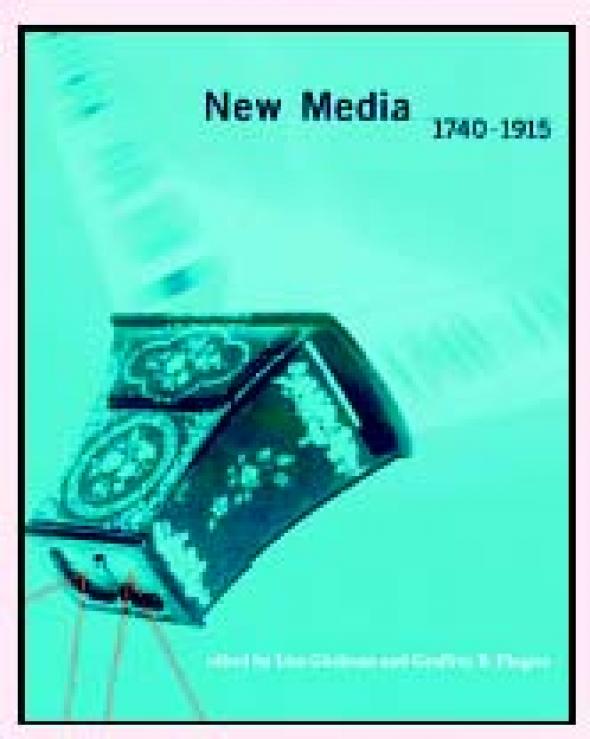New Media 1740-1915
New Media 1740 – 1915 has one of those titles that is as much a polemic as it is a description of the book’s content or a label for easy identification. The jarring anachronism of juxtaposing the contemporary formulation ‘new media’ with ‘1740 – 1915’, a stretch of time in which neither the term nor the phenomena it is usually supposed to represent would have existed, is of course deliberate. It lets the potential reader know what the book is likely to be about; a demonstration that our experience of the disruptions and challenges brought about by the emergence of new means of communication and representation is neither new nor unprecedented and that, even if the term itself was not used, people have been dealing with ‘new media’ since at least the middle of the 18th century. To point out that new media are always emerging and always challenging our preconceptions is a useful antidote to our current state of ‘future shock’. It is also a valuable corrective to the smug ahistoricism of much writing about contemporary developments in media and technology, which appears to regard what is happening now as without precedent and even without a past.Such an approach, however, is not without methodological dangers. The most obvious is that, in the zeal to connect current and historical phenomena, the specificities and complexities of the past could be occluded – in particular its irreducible distance from and difference to our own experiences. In fairness, the editors and most of the authors have avoided this particular pitfall. (The possible exception being Ellen Gruber Garvey whose otherwise excellent ‘Scissorizing and Scrapbooks: Nineteenth-Century Reading, Remaking and Recirculating’ was perhaps a little too determined to compare current activities on the web with the practices she describes.)
These small points aside, this is an excellent collection. The editors have intelligently resisted many of the lures that await those embarking on such projects, including the temptation to feature well-known contributors, or to stuff in too many essays. Instead they have put together ten carefully chosen papers by young and comparatively unknown academics, none of which is longer than thirty pages, notes included, and each of which is highly readable, intelligent and informative. Unusually I read the book from beginning to end, from Erin C. Blake’s fascinating account of an early device for creating the illusion of three-dimensions from a twodimensional image called theZograscope, through to Paul Young’s brilliant essay showing the relation between early film and the telegraph. I would be hard pressed to single out any of the essays given the overall quality of the collection, though I did find Diane Zimmerman Umble’s account of the Amish reaction to the telephone particularly worthwhile. Some potential readers may be put off by the almost total concentration on the United States; a rule to which Blake’s paper dealing with 18th century England was the only exception. But this would be a shame, given the riches offered here.
Charlie Gere
New Media 1740-1915 // Lisa Gitelman and Geoffrey B. Pingree eds. // MIT Press // 2003 // 304 pp // £23.50 // ISBN 0-262-07245-9
Mute Books Orders
For Mute Books distribution contact Anagram Books
contact@anagrambooks.com
For online purchases visit anagrambooks.com








